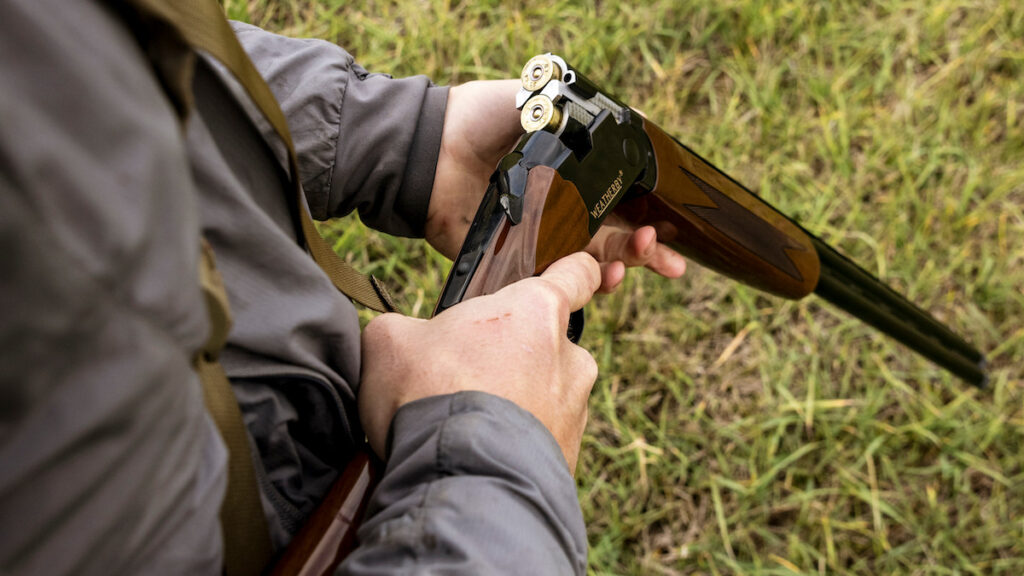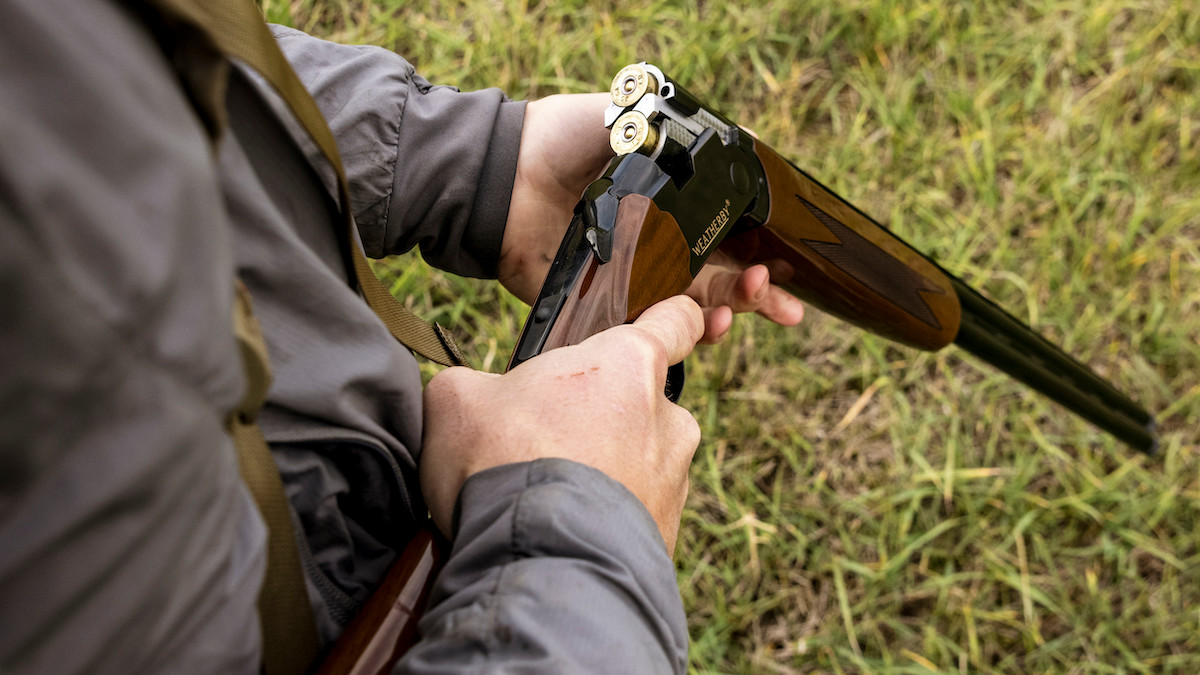
12 Gauge vs. 20 Gauge: Choosing the Right Shotgun for Your Needs
Choosing the right shotgun can be a daunting task, especially when faced with the common dilemma: 12 gauge vs. 20 gauge. Both are popular choices, each offering distinct advantages and disadvantages depending on the shooter’s experience, intended use, and physical characteristics. This comprehensive guide dives deep into the nuances of each gauge, providing you with the knowledge to make an informed decision and select the shotgun that best suits your specific needs. We’ll explore everything from recoil and shot patterns to common uses and ammunition availability. Whether you’re a seasoned shooter or just starting out, understanding the differences between these two gauges is crucial for maximizing your success and enjoyment in the field or at the range.
Understanding the Basics: What Does Gauge Mean?
Before diving into the specifics of 12 gauge vs. 20 gauge, it’s essential to understand what “gauge” actually signifies in the context of shotguns. The gauge is a unit of measurement derived from the weight of a solid sphere of lead that would fit the bore of the shotgun. For example, a 12-gauge shotgun has a bore diameter equal to that of a lead sphere weighing 1/12 of a pound. Similarly, a 20-gauge shotgun’s bore corresponds to a lead sphere weighing 1/20 of a pound. Therefore, a smaller gauge number indicates a larger bore diameter. This seemingly archaic system has persisted for centuries and remains the standard for measuring shotgun bore sizes.
12 Gauge Shotguns: Power and Versatility
The 12-gauge shotgun is the most popular shotgun in the United States, and for good reason. It’s known for its power, versatility, and wide availability of ammunition. It’s a great choice for a variety of applications, offering a good balance between power and manageability for many shooters. The 12 gauge is a workhorse, adaptable to almost any shooting scenario.
Key Characteristics of the 12 Gauge:
- Power: The larger bore diameter of the 12 gauge allows it to hold more shot, delivering greater energy on target.
- Versatility: It’s suitable for a wide range of applications, from hunting waterfowl and upland game to clay shooting and home defense.
- Ammunition Availability: 12-gauge ammunition is widely available in a vast array of loads, making it easy to find the perfect shell for any purpose.
- Recoil: The increased power of the 12 gauge comes with a trade-off: greater recoil. This can be a factor for smaller-framed shooters or those sensitive to recoil.
Uses for the 12 Gauge:
The 12-gauge shotgun excels in numerous applications, including:
- Waterfowl Hunting: Its power and long-range capabilities make it ideal for taking down ducks and geese.
- Upland Game Hunting: With appropriate shot sizes, it can be effective for hunting pheasant, quail, and other upland birds.
- Clay Shooting (Trap, Skeet, Sporting Clays): Its versatility makes it a popular choice for various clay target disciplines.
- Home Defense: The stopping power of the 12 gauge makes it a formidable home defense weapon.
20 Gauge Shotguns: Lighter Recoil and Manageability
The 20-gauge shotgun is a popular alternative to the 12 gauge, particularly for shooters who are recoil-sensitive or prefer a lighter, more manageable firearm. While it doesn’t pack the same punch as the 12 gauge, it still offers plenty of power for many applications, making it an excellent choice for smaller-framed individuals, youth shooters, and those seeking a more comfortable shooting experience.
Key Characteristics of the 20 Gauge:
- Lighter Recoil: The smaller bore diameter and reduced shot load result in significantly less recoil compared to the 12 gauge.
- Manageability: 20-gauge shotguns are generally lighter and easier to handle, making them a good choice for smaller shooters or those who carry their shotgun for extended periods.
- Sufficient Power: While not as powerful as the 12 gauge, the 20 gauge still provides ample power for many hunting and sporting applications.
- Ammunition Availability: While not as extensive as 12-gauge options, 20-gauge ammunition is still readily available in a variety of loads.
Uses for the 20 Gauge:
The 20-gauge shotgun is well-suited for:
- Upland Game Hunting: It’s an excellent choice for hunting quail, dove, and other smaller upland birds.
- Youth Shooters: The lighter recoil and manageable size make it ideal for introducing young people to shotgun shooting.
- Small Game Hunting: It can be effective for hunting rabbits and squirrels.
- Clay Shooting (Skeet): Its lighter recoil is advantageous for skeet shooting, where multiple shots are often fired in quick succession.
Recoil Comparison: A Critical Factor
Recoil is a crucial factor to consider when choosing between a 12 gauge and a 20 gauge. Recoil is the rearward force experienced when firing a shotgun. Excessive recoil can lead to discomfort, flinching, and reduced accuracy. As a general rule, the heavier the shot load and the lighter the gun, the greater the recoil. The 12 gauge, with its larger shot load, typically generates significantly more recoil than the 20 gauge. The difference in felt recoil can be substantial, especially for extended shooting sessions.
While recoil can be mitigated through various techniques, such as using a recoil pad or shooting a heavier gun, the 20 gauge inherently offers a more comfortable shooting experience for many individuals. This is especially important for beginners, youth shooters, and those with physical limitations.
Shot Patterns and Effective Range
The shot pattern refers to the spread of the shot pellets as they travel downrange. A tighter shot pattern is desirable for longer-range shots, while a more open pattern is preferable for closer-range targets. The 12 gauge, with its larger bore diameter, generally produces denser shot patterns than the 20 gauge at longer ranges. This is due to the greater number of pellets in the 12-gauge shell, which allows for a higher probability of hitting the target at extended distances.
However, advancements in ammunition technology have narrowed the gap between the two gauges in recent years. Modern 20-gauge loads can deliver impressive shot patterns and effective ranges, making them a viable option for many applications where the 12 gauge was once considered essential. Ultimately, the optimal gauge depends on the specific shooting scenario and the shooter’s skill level.
Ammunition Availability and Cost
Ammunition availability and cost are important considerations when choosing between a 12 gauge and a 20 gauge. The 12-gauge ammunition is the most widely available shotgun ammunition in the United States, and its popularity translates to lower prices. You can find 12-gauge shells in virtually every sporting goods store and gun shop, and the variety of loads is staggering.
The 20-gauge ammunition is also readily available, but the selection is not as extensive as that of the 12 gauge. While 20-gauge shells are often slightly more expensive than comparable 12-gauge loads, the difference is usually minimal. For most shooters, the cost of ammunition is not a major deciding factor in the 12 gauge vs. 20 gauge debate.
Shotgun Weight and Handling
Shotgun weight and handling are often overlooked but are crucial for comfort and accuracy. 20-gauge shotguns are generally lighter than their 12-gauge counterparts. This lighter weight translates to easier handling, especially during long days in the field. A lighter gun is less fatiguing to carry and swing, which can improve your shooting performance. For smaller-framed shooters or those who prioritize maneuverability, the 20 gauge offers a distinct advantage.
However, the lighter weight of the 20 gauge can also contribute to increased felt recoil. A heavier gun absorbs more recoil energy, reducing the impact on the shooter. Therefore, it’s important to strike a balance between weight and recoil when choosing a shotgun. Some shooters prefer the heavier weight of the 12 gauge for its recoil-dampening properties, while others prioritize the lighter weight and easier handling of the 20 gauge.
Home Defense Considerations
Both 12-gauge and 20-gauge shotguns can be effective for home defense, but each has its advantages and disadvantages in this role. The 12 gauge is renowned for its stopping power, delivering a devastating blow to any intruder. A single shot from a 12-gauge shotgun can quickly neutralize a threat, making it a formidable home defense weapon.
However, the 12 gauge’s heavy recoil can be a deterrent for some shooters, especially in a high-stress situation. The 20 gauge offers a more manageable recoil, allowing for faster follow-up shots and improved accuracy. While it doesn’t possess the same raw stopping power as the 12 gauge, it’s still more than capable of incapacitating an attacker. For home defense, the best gauge is the one that you can shoot accurately and comfortably under pressure.
Expert Opinions and Recommendations
When considering the 12 gauge vs. 20 gauge debate, it’s helpful to consider expert opinions and recommendations. Many seasoned shooters and firearms instructors advocate for the 12 gauge as the ultimate all-around shotgun, citing its power, versatility, and ammunition availability. They argue that with proper technique and recoil management, the 12 gauge can be mastered by most shooters.
However, an increasing number of experts are recognizing the merits of the 20 gauge, particularly for beginners, youth shooters, and those who prioritize comfort and manageability. They point out that modern 20-gauge loads are surprisingly effective and that the lighter recoil can lead to improved accuracy and confidence. Ultimately, the best gauge depends on the individual shooter and their specific needs and preferences. Based on extensive testing and user feedback, both gauges can perform exceptionally well when applied to their ideal use cases.
Making the Right Choice for You
The decision between a 12 gauge and a 20 gauge ultimately comes down to personal preference and intended use. Consider your shooting experience, physical characteristics, and the types of shooting activities you plan to pursue. If you’re a larger-framed individual who plans to hunt waterfowl or engage in long-range shooting, the 12 gauge may be the better choice. If you’re a smaller-framed shooter, a youth shooter, or someone who prioritizes comfort and manageability, the 20 gauge may be a more suitable option. Ideally, try shooting both gauges before making a final decision.
Regardless of which gauge you choose, remember to prioritize safety and practice proper shooting techniques. With the right shotgun and the right skills, you can enjoy a lifetime of shooting sports and hunting adventures.
Final Thoughts: Weighing the Options for Optimal Shooting
In conclusion, the choice between a 12 gauge and a 20 gauge shotgun is a personal one, heavily influenced by individual needs and preferences. Both gauges offer unique advantages and disadvantages. By carefully considering the factors discussed in this guide – recoil, shot patterns, ammunition availability, shotgun weight, and intended use – you can make an informed decision and select the shotgun that will best serve you. Whether you opt for the power and versatility of the 12 gauge or the lighter recoil and manageability of the 20 gauge, the most important thing is to choose a shotgun that you can shoot safely, accurately, and comfortably. Share your experiences with selecting the ideal gauge for your needs in the comments below.

